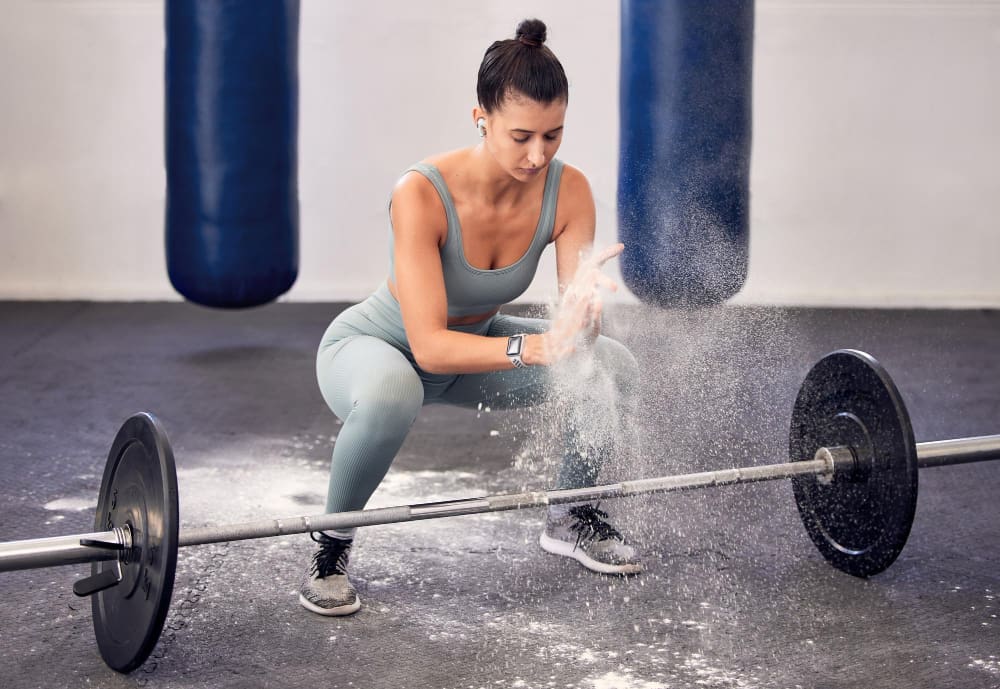For lifters of all levels, from beginners in a local box to seasoned athletes training on the sands of South Beach, the deadlift stands as a pinnacle of strength and full-body power. However, its effectiveness and safety hinge on one critical, non-negotiable element: maintaining a flat, neutral spine. Learning to execute this foundational lift with a straight back is paramount for anyone, anywhere, who wants to harness the deadlift’s immense benefits. Doing so protects the vulnerable lumbar spine from dangerous forces, ensures efficient power transfer from the hips and legs, and ultimately allows you to build a stronger, more resilient physique safely and sustainably.
Why a Flat Back is the Golden Rule of Deadlifting
To understand why a flat back is so crucial, we need to look at the basic biomechanics of the spine. Your vertebral column is a series of bones (vertebrae) stacked on top of each other, separated by cushion-like intervertebral discs. When your spine is in a neutral position—maintaining its natural curves without excessive flexion (rounding) or extension (arching)—it is incredibly strong and stable under compressive loads, like the weight of a barbell.
When you round your lower back, a phenomenon known as lumbar flexion, you fundamentally change how force is distributed. Instead of the force being absorbed and managed by the powerful muscles of your back, hips, and legs, it creates immense shear force on the intervertebral discs. Imagine trying to slide one vertebra forward over the one below it; this shearing action is what puts the discs at high risk for bulging or herniation, a painful and often debilitating injury.
Beyond injury prevention, a neutral spine is simply a more powerful position. A flat back acts as a rigid lever, efficiently transferring the force generated by your legs and hips directly into the barbell. When your back rounds, it becomes a “leaky” point in this kinetic chain. Energy is lost as your spine flexes, meaning less force gets to the bar, and your potential for lifting heavy weight is significantly diminished.
The Anatomy of a Perfect Deadlift Setup
Achieving a flat back isn’t about just thinking “keep my back straight.” It is the result of a meticulous and intentional setup process where you build tension throughout the entire body before the bar even leaves the floor. Each step is designed to lock your spine into a safe and powerful position.
Step 1: Foot Placement and Stance
Your stance is your foundation. For a conventional deadlift, place your feet about hip-width apart, with your toes pointing mostly forward or slightly out. Your shins should be approximately one inch from the barbell, so if you look straight down, the bar is cutting your foot in half. This positioning ensures the bar travels in a straight vertical path close to your center of gravity.
A sumo stance, which is much wider, changes the mechanics significantly, placing more emphasis on the hips and adductors. While it can make it easier for some body types to maintain an upright torso, the fundamental principle of a neutral spine remains the same.
Step 2: Mastering the Hip Hinge
The deadlift is a hinge, not a squat. To initiate the movement, push your hips back as if trying to touch a wall behind you with your glutes. Keep your legs relatively straight during this initial hinge, allowing your torso to lean forward until you can grip the bar. Only after your hands are on the bar should you bend your knees to lower your hips into the final starting position.
This sequence is critical. Hinging first loads the powerful hamstrings and glutes. If you squat down to the bar, your hips will likely be too low, pushing your knees forward and forcing the bar to travel around them, which often leads to a rounded back as you compensate.
Step 3: The Grip and Creating Tension
Grip the bar just outside your shins. The most common grips are the double overhand (pronated), the mixed grip (one hand over, one hand under), and the hook grip. While a mixed grip can prevent the bar from rolling, it can also create a slight torso rotation, so be mindful of keeping your shoulders square.
Once you have your grip, it’s time to create tension. This is perhaps the most important cue for maintaining a flat back. Think about “pulling the slack out of the bar.” Without lifting the weight, pull upward until you hear the plates “click” against the bar. This action will engage your latissimus dorsi muscles (lats), the massive muscles on the sides of your back. Engaging your lats is like activating two internal support beams that pull your chest up and lock your spine in place.
Step 4: The Final “Wedge”
With the slack pulled out, your lats engaged, and your hips set, take a deep breath into your belly—not your chest. Brace your core as if you are about to be punched in the stomach. This is the Valsalva maneuver, and it creates immense intra-abdominal pressure that further stabilizes your spine. Your body should now feel like a tightly coiled spring, wedged between the floor and the barbell. From here, the lift is initiated by driving the floor away with your legs, not by pulling with your back.
Common Causes of a Rounded Back (And How to Fix Them)
Even with a perfect setup in mind, rounding can still happen. Understanding the root cause is key to fixing it.
Weak Posterior Chain
Your posterior chain—the glutes, hamstrings, and spinal erectors—is the engine of the deadlift. If these muscles are not strong enough to handle the load through the entire range of motion, your body will default to using the spinal ligaments and structures for support, causing the back to round.
The Fix: Incorporate accessory exercises that target these muscles. Romanian Deadlifts (RDLs), Good Mornings, glute-ham raises, and hip thrusts are all excellent choices for building the requisite strength.
Poor Core Bracing
Many lifters mistake a big lifting belt for a core. A belt is a tool to press your core against, but it cannot compensate for a weak or unengaged core. If you can’t create and maintain intra-abdominal pressure, your torso will fold under a heavy load.
The Fix: Practice bracing in all your lifts. Exercises like front planks, side planks, and bird-dogs teach you to hold a neutral spine while resisting forces that try to pull you out of position. Practice taking a deep belly breath and holding that tension.
Mobility Restrictions
Limited mobility, particularly in the hips and ankles, can force your lumbar spine to compensate. If you can’t get into a proper starting position without rounding your back, it might be because your hips are too tight to allow for a deep hinge, or your ankles lack the dorsiflexion needed to keep your shins vertical.
The Fix: Integrate a consistent mobility routine. Focus on hip flexor stretches, pigeon poses for hip rotation, and ankle mobility drills. Foam rolling the hamstrings and glutes can also provide temporary relief to help you achieve better positioning.
Ego Lifting
The most common culprit is simply trying to lift too much weight too soon. No matter how strong you are, your form will eventually break down if the load exceeds your capacity to maintain it. This is especially true in a high-energy environment like Miami’s fitness scene, where the pressure to perform can be high.
The Fix: Leave your ego at the door. Prioritize perfect form with a lighter weight over sloppy form with a heavier one. Record your lifts to analyze your technique objectively. True strength is built over years of consistent, intelligent training, not in a single heroic lift.
Conclusion: Building a Resilient Body for Life
Mastering the flat-back deadlift is a journey of skill, strength, and patience. It requires you to treat the lift not as a brute-force pull, but as a technical movement built on a foundation of tension and proper positioning. By understanding the anatomy, perfecting the setup, and addressing your specific weaknesses with targeted accessory work, you can transform your deadlift into the ultimate tool for building a powerful, functional, and injury-proof body. In a city that celebrates strength and aesthetics, remember that true, lasting fitness is built on a bedrock of safe and effective movement—and in the world of lifting, nothing exemplifies this more than a perfectly executed deadlift.







